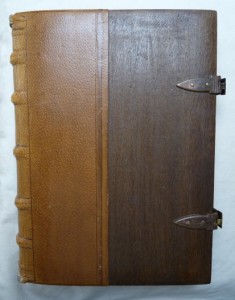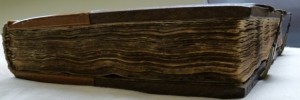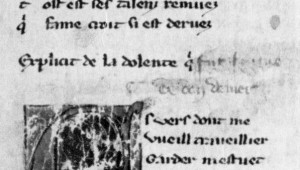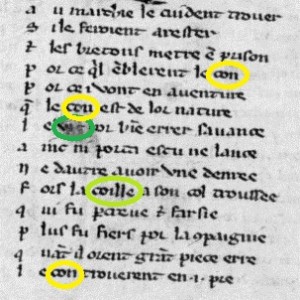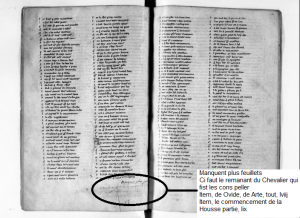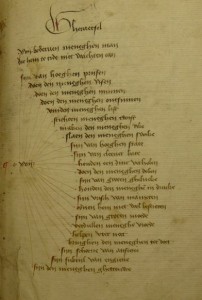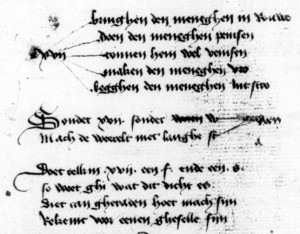Some facts and figures about the Geraardsbergen manuscript.
The binding:
The present-day binding contains a composite manuscript (?), (i.e. two manuscripts, or codicological units (?)). Both units in this binding have been copied by the same scribe (?): the first unit contains two chronicles, and the second unit is the actual Geraardsbergen manuscript. We do not know when the two units were brought together, but the codex probably existed as a single book by the late Middle Ages. (see Story 4)
The measurements:
The paper leaves/folia of the Geraardsbergen manuscript measure 28.7 x 21.2 cm (almost present-day A4 size). The remaining 81 leaves (or 162 pages) are numbered from 103 to 183, and are divided over six gatherings (?) of four bifolia (or eight leaves) (?). The manuscript is incomplete, because between folia 110 and 111 three leaves are missing; for unknown reasons they have been cut out. It is possible that one (or more) gathering(s) are missing from the end of the codex, as the final text ends unfinished at the bottom of the last leaf.
The layout and the script:
The text is written in one column of 28 lines per page in a stylized cursive script (?) in brown ink. The decoration in the manuscript is scarce: red ink has only been used to enter a paragraph mark in the margins to indicate the beginning of a new (part of the) text, or to highlight the first letter of a line. Some simple red decorative lines have been used to fill the blank space at the end of a prose text. The rubrics (?) are not in red, but written in the same brown ink as the texts. The lack of colour in the pages gives the manuscript a sober appearance. It was not meant to impress some important patron, but may have been intended for personal use.

